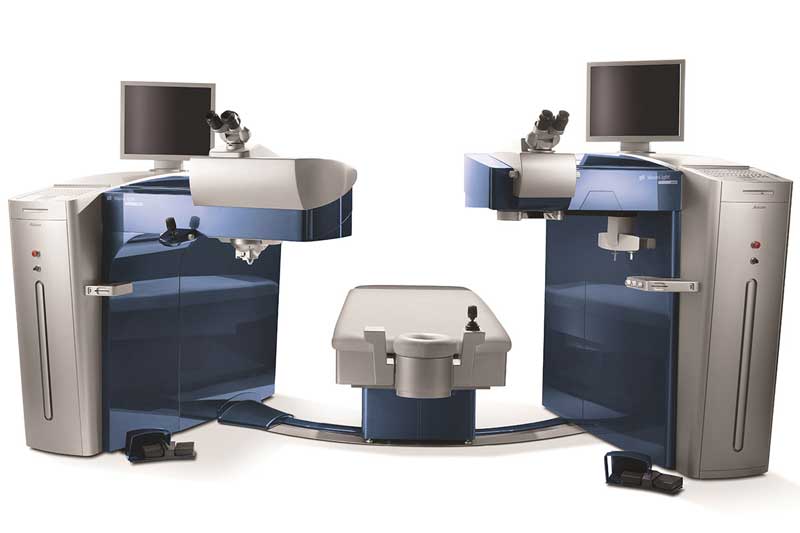
Can you imagine being able to see the alarm clock or play sports without the hassles of glasses or contact lenses? Laser vision correction options at Mississippi Vision can help set you on a path for reduced dependence on glasses or contacts. In most cases, our patients do not need glasses or contact lenses after laser vision correction.
We are proud to offer laser vision correction options as well as other vision correction options. For laser vision correction, we offer two main types of eye surgery, LASIK and PRK (Photorefractive Keratectomy). Both of these forms of laser vision correction work very well and have similar outcome results. Depending on your unique visual conditions, our ophthalmologists will make a recommendation about what procedure would be best for you. Mississippi Vision can provide you with an informational package to help you better understand if LASIK or PRK is right for you. Please contact us to request more information or to schedule a screening appointment.
Before we get into a detailed discussion regarding these 2 types of laser vision correction we wanted to explain the basic differences. Remember both types yield excellent results but the surgical techniques do vary. LASIK eye surgery is the most popular of the 2 procedures and the healing time is typically faster than that of PRK.
With LASIK eye surgery, a hinged flap is created in the middle layer of the cornea. The flap is folded back to expose the corneal layers underneath. An excimer laser is then used to treat the middle layer and the flap is repositioned for healing. In PRK, no flap is created. Instead, the outer surface of your cornea – referred to as “epithelium” – is removed and discarded. Once this is discarded the excimer laser is then used to reshape the cornea. In order to determine the best procedure for you please consult with the skilled Mississippi eye doctors at Mississippi Vision Correction Center.
With the development of precise surgical cutting instruments, an excimer laser is combined with an incision to produce a particular surgical result. This LASIK procedure has become, by far, the most commonly performed refractive surgery procedure used today. During LASIK, the surgeon first creates a thin corneal flap using a device called a microkeratome. The corneal flap is lifted up, and the laser beam is applied to the exposed interior surface of the cornea to reshape the tissue. The flap is then replaced over the treated area. This corneal flap serves a natural bandage, which eliminates the discomfort associated with other types of refractive surgery and expedites the healing process. Because of the extraordinary bonding properties of the corneal tissue, stitches are not needed to keep the flap in place postoperatively.


The EXCIMER laser, which is a specific type of “cool” laser, generates its power from light in the ultraviolet range. It cannot be visualized by the human eye. Because the laser does not generate any heat, there is no tissue damage as the result of the laser light. The energy of the laser simply causes minuscule amounts of corneal tissue to dissociate at a microscopic level. As the treatment with the laser proceeds, microscopic layers of tissue, approximately 1/10th the width of a human hair, are removed. The laser is programmed to remove precisely the amount of tissue needed to achieve the desired result.